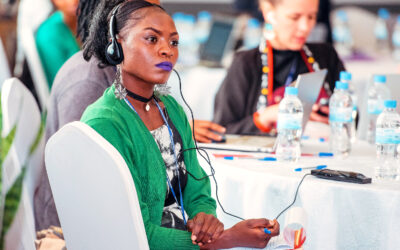Free the Slaves is spreading the word about global trafficking on global TV and radio. FTS Executive Director Maurice Middleberg was a guest on the most recent edition of “On the Line,” broadcast worldwide by the Voice of America.
Even though slavery was abolished, it still exists because victims of poverty, discrimination and corruption remain vulnerable and are preyed upon by traffickers, Maurice explained. “The fact that it’s illegal, doesn’t mean that it stopped existing,” he said.
Slavery looks different today, in comparison to how it looked hundreds of years ago. “Slavery was a terrible part of all of our histories and something that we must not forget, but it’s really until now that the world is waking up to the fact that modern-day slavery exists,” said Joanna Ewart-James, campaign team manager of Walk Free in London, another guest on the program.
In the United States, sex trafficking is one of the most talked about forms of modern slavery. But worldwide, sex slaves constitute a fifth of modern-day slaves. The other 80 percent are enslaved in other forms of forced work where there is intensive manual labor.
“Wherever you need a lot of hands and brute force, there’s where you are going to find slavery,” Maurice explained. “In fact, that’s why it’s often under the noses of people and not really seen because it seems to be part of the workforce. Many of the people that you see working in these industries are in fact in the state of slavery.”
What does it mean to be in “the state of slavery” today? If slavery is under our noses, what can we do to see it and stop it?
For those answers, watch the entire show. It’s a quick and easy way to learn what slavery looks like today, and what we can do to end it within our lifetime.



